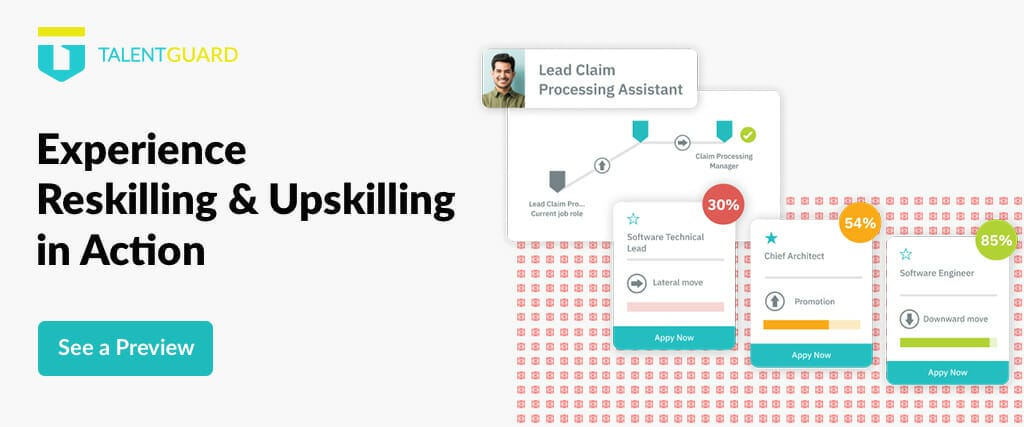Data-Driven Succession Planning for Improved Performance
Embracing the Succession Imperative: Shifting Towards Data-Driven Talent Management in 2024

Data-driven Succession planning has always been crucial for organizational continuity and growth. However, as we navigate the complexities of 2024, the imperative to move beyond subjective nominations towards data-driven insights in talent management has never been more pressing. Let’s explore why this shift is essential and how it can propel organizations towards sustainable success.
The Changing Landscape of Succession Planning
Traditionally, succession planning relied heavily on subjective assessments and personal preferences when identifying potential successors for key roles within the organization. While this approach may have worked in the past, the rapidly evolving business environment demands a more strategic and objective approach to talent management.
In 2024, organizations are facing unprecedented challenges, from technological disruptions to shifting consumer preferences and global economic uncertainties. In this context, relying on gut feelings or favoritism to identify future leaders is no longer viable. Instead, organizations must leverage data-driven insights to make informed decisions about succession planning.
The Role of Data in Succession Planning
Data-driven succession planning involves harnessing various sources of data, including skills assessments, performance evaluations, career aspirations, and company goals, to identify and develop potential leaders within the organization. By leveraging data analytics and predictive modeling, organizations can gain valuable insights into the strengths, weaknesses, and potential of their talent pool.
- Skills Assessment: Assessing employees’ skills and competencies is a fundamental aspect of data-driven succession planning. By objectively evaluating individuals’ skills against the requirements of key roles, organizations can identify high-potential candidates who possess the necessary capabilities to succeed in leadership positions.
- Performance Evaluation: Performance data provides valuable insights into employees’ past achievements, contributions, and areas for improvement. By analyzing performance metrics, organizations can identify top performers who have consistently demonstrated excellence and leadership potential.
- Career Aspirations: Understanding employees’ career aspirations is essential for effective succession planning. By aligning individuals’ career goals with organizational objectives, organizations can nurture talent and provide opportunities for growth and development.
- Company Goals: Data-driven succession planning should be closely aligned with the strategic goals and priorities of the organization. By identifying future leadership needs and aligning succession plans with business objectives, organizations can ensure continuity and drive long-term success.
The Benefits of Data-Driven Succession Planning
Embracing data-driven succession planning offers several benefits for organizations:
- Objective Decision-Making: By basing succession decisions on data and analytics, organizations can mitigate biases and ensure fairness and objectivity in the selection process.
- Improved Talent Development: Data-driven insights enable organizations to identify and develop high-potential talent, providing targeted training and development opportunities to nurture future leaders.
- Enhanced Employee Engagement: By considering employees’ skills, aspirations, and career goals in succession planning, organizations demonstrate their commitment to employee development, fostering engagement and loyalty.
- Better Business Outcomes: By aligning succession plans with company goals, organizations can ensure a seamless transition of leadership and drive business continuity and growth.
The succession imperative requires organizations to move away from subjective nominations and embrace data-driven insights in talent management. By leveraging skills assessments, performance evaluations, career aspirations, and company goals, organizations can identify and develop the next generation of leaders, ensuring continuity and driving long-term success in an increasingly competitive business environment.
Want to learn more? Here’s what to look at next:
Watch the webinar: Career Pathing and Talent Mobility: Driving Engagement and Performance
Read the white paper: Career Pathing as a Talent Imperative
AI Buyers Guide for HR: Pitfalls of ‘Hallucinating’ GPT Models
AI Buyers Guide for HR: Navigating the Pitfalls of ‘Hallucinating’ GPT Models (#3 in Series) by Frank P. Ginac, CTO at TalentGuard Welcome to the next addition to my series, AI Buyers Guide for Human Resources (HR) Professionals. This is article number 2 in the series. My objective for this series is to arm HR […]
AI Buyers Guide for HR: Unmasking the Limits of ChatGPT
AI Buyers Guide for HR: Unmasking the Limits of ChatGPT (#2 in Series) by Frank P. Ginac, CTO at TalentGuard Welcome to the next addition to my series, AI Buyers Guide for Human Resources (HR) Professionals. This is article number 2 in the series. My objective for this series is to arm HR professionals responsible […]
AI Buyers Guide for HR: Talent Management
AI Buyers Guide for HR: Talent Management (#1 in a series) by Frank P. Ginac, CTO at TalentGuard “AI is all about figuring out what to do when you don’t know what to do.” — Peter Norvig “It is usually agreed that a system capable of learning deserves to be called intelligent, and conversely, a […]





